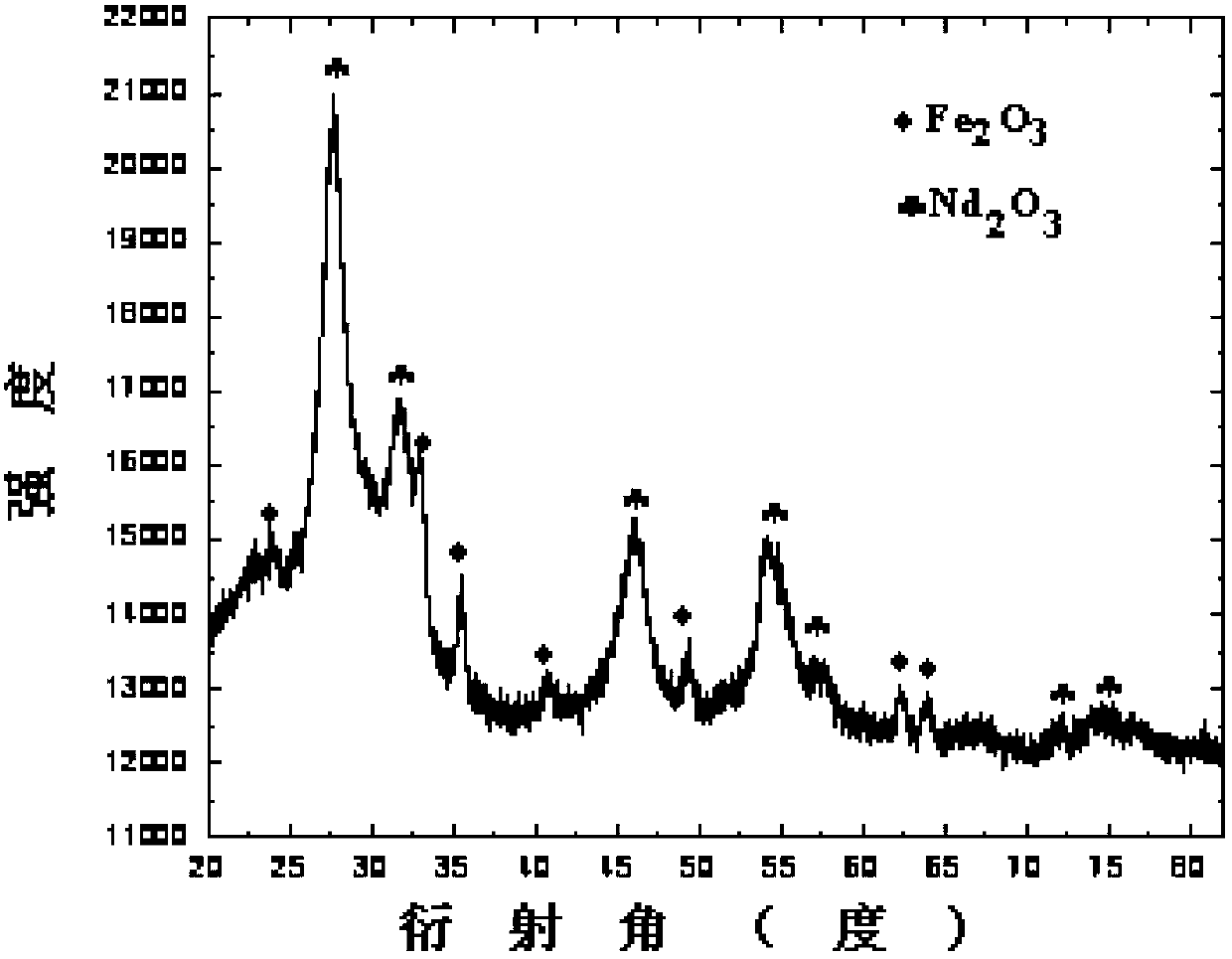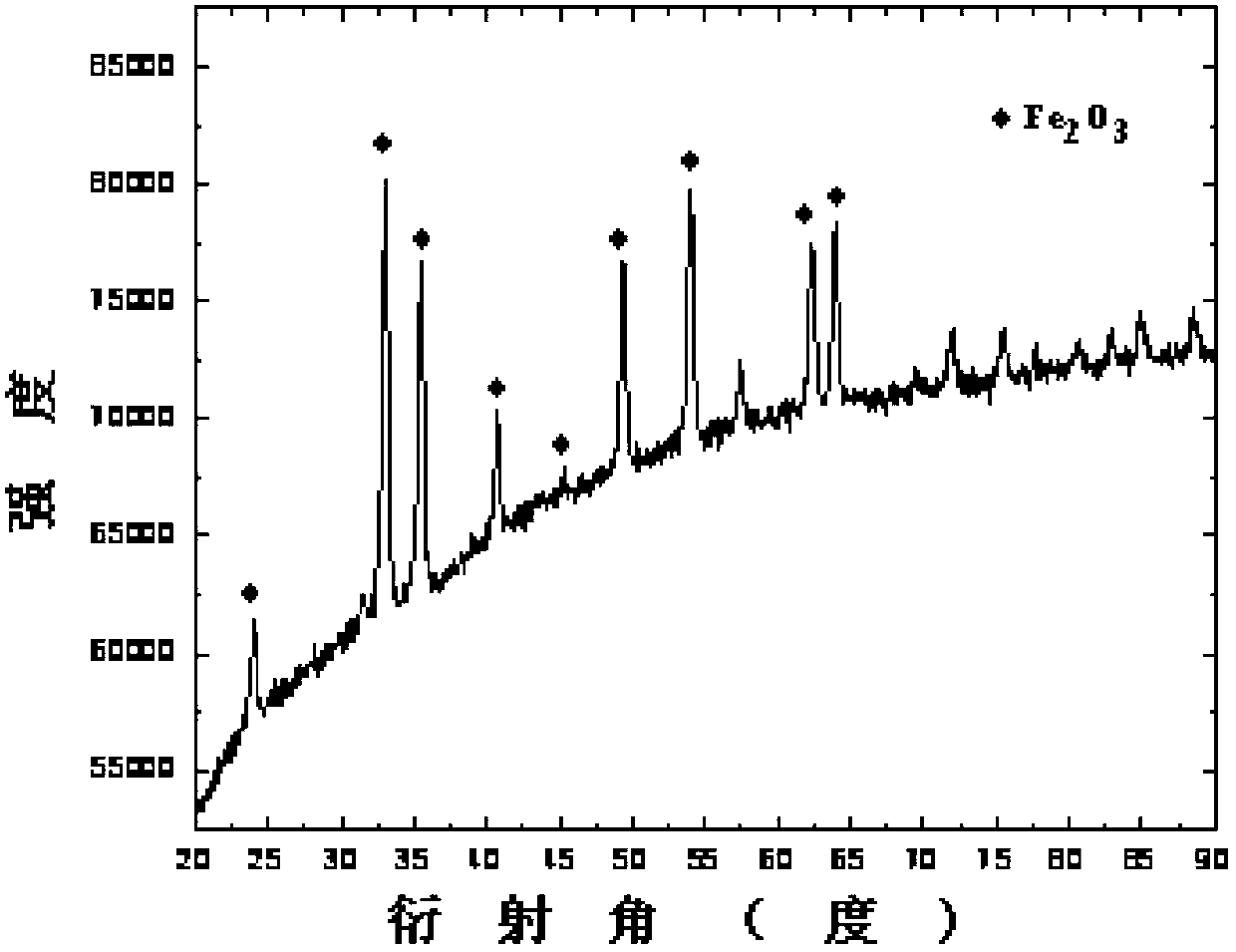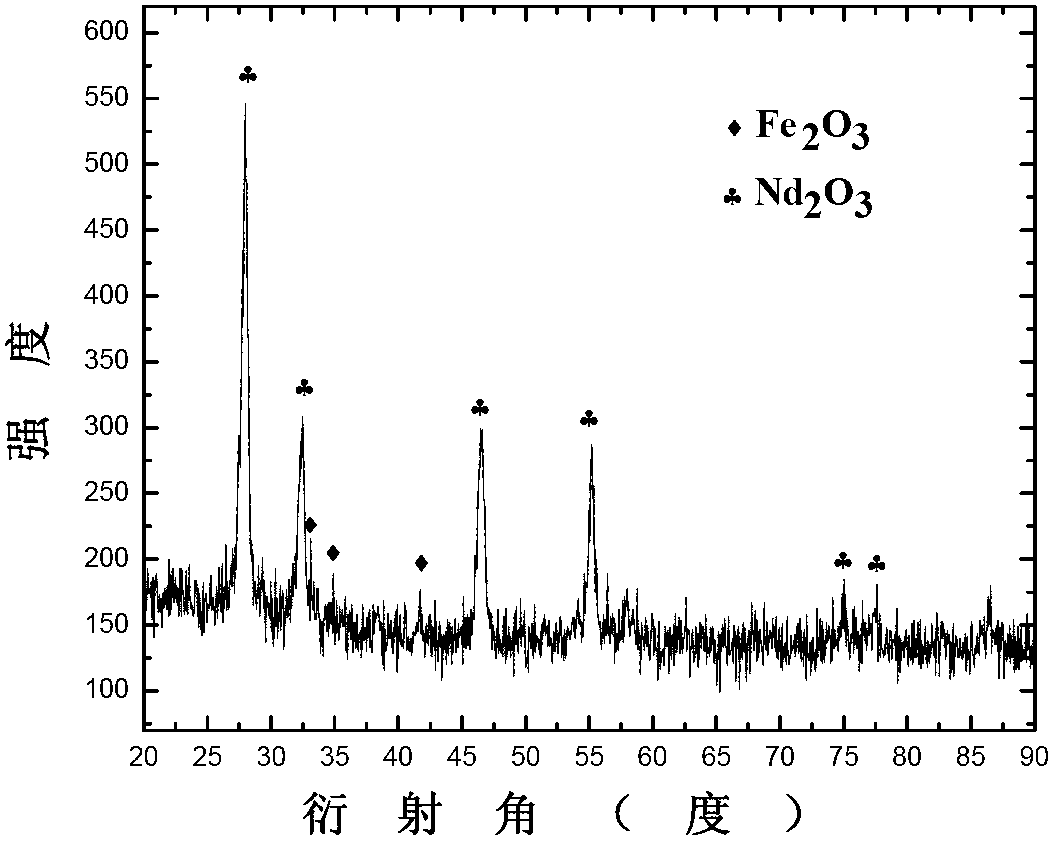Method for recovering neodymium and iron from neodymium iron boron oil sludge through two-step co-precipitation
A neodymium iron boron and co-precipitation technology, applied in the direction of improving process efficiency, can solve the problems of human injury, acid-base waste liquid is difficult to handle, not made into industrial products, etc. The effect of the precipitation effect
- Summary
- Abstract
- Description
- Claims
- Application Information
AI Technical Summary
Problems solved by technology
Method used
Image
Examples
Embodiment 1
[0025] ①Take 5g of NdFeB sludge, add 60ml of 4mol / L hydrochloric acid to the waste, fully dissolve it, add excess hydrogen peroxide to the filtrate, and heat the oxidized solution to 70°C. Adjust the acidity with 1:2 ammonia water to control the pH value of the solution to 2.
[0026] ② Add excess 0.1mol / L oxalic acid solution under constant stirring, and continue to stir for two minutes; white fine crystal hydrated rare earth oxalate is formed in the solution (the amount of oxalic acid in the final solution is about 1-1% of the total mass of oxalic acid used) 1.5%). Aged at room temperature for 3 hours. Aging is beneficial to reduce the adsorption of impurities.
[0027] ③ After cooling to room temperature, filter with fast filter paper. And wash the precipitate with 1% oxalic acid solution 6-8 times. The precipitate is to be burned; the filtrate and washing liquid are sent to the next process together.
[0028] ④ Dilute the above liquid material to 0.1mol / L (that is, 0....
Embodiment 2
[0037] ①Take 5g of NdFeB sludge, add 60ml of 4mol / L hydrochloric acid to the waste, fully dissolve it, add excess hydrogen peroxide to the filtrate, and heat the oxidized solution to 80°C. Adjust the acidity with 1:2 ammonia water to control the pH value of the solution to 1.5.
[0038] ② Add excessively hot ammonium oxalate (ammonium oxalate solution is made by dissolving 1.5g ammonium oxalate in 20ml water) solution under constant stirring, and continue stirring for two minutes; white fine crystal hydrated rare earth oxalate is formed in the solution. Aged at room temperature for 3 hours. Aging is beneficial to reduce the adsorption of impurities.
[0039] ③ After cooling to room temperature, filter with fast filter paper. And wash the precipitate with 1% oxalic acid solution 6-8 times. The precipitate is to be burned; the filtrate and washing liquid are sent to the next process together.
[0040] ④ Dilute the above liquid material to 0.1mol / L (that is, 0.65 liters), add a...
PUM
 Login to View More
Login to View More Abstract
Description
Claims
Application Information
 Login to View More
Login to View More - R&D
- Intellectual Property
- Life Sciences
- Materials
- Tech Scout
- Unparalleled Data Quality
- Higher Quality Content
- 60% Fewer Hallucinations
Browse by: Latest US Patents, China's latest patents, Technical Efficacy Thesaurus, Application Domain, Technology Topic, Popular Technical Reports.
© 2025 PatSnap. All rights reserved.Legal|Privacy policy|Modern Slavery Act Transparency Statement|Sitemap|About US| Contact US: help@patsnap.com



